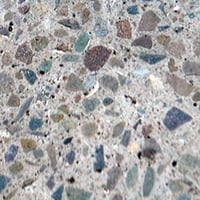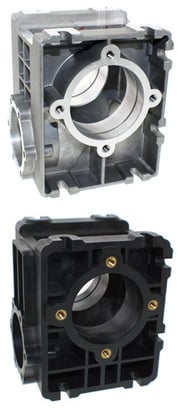What Are Composites?
Composites are changing the world we live in. From the Stone Age, to the Bronze Age, to the Iron Age, our civilization’s history has been defined by the materials we use. In the past, humans reshaped the raw materials they discovered in nature to create the items they needed. In our modern age we have moved beyond found objects, and have developed the technology to produce new materials, whose very make up is engineered specifically to fit the task at hand.
These composite materials deliver superior results compared to traditional metal, rubber, or even basic plastic parts. The advantages new composites offer however, is not limited to increasing the strength of existing components, but also now allow designers and engineers to rethink almost every structure humans produce.
How Composites are Made
Composite materials combine two or more basic (constituent) materials, each having different characteristics, to produce a new material that is usually designed to have superior qualities compared to existing materials. The constituent materials of composites remain distinct elements within the composite, which makes composite materials different from a material which is simply a mixture of ingredients.
 One common example of a composite material is concrete, whose basic materials are loose stones and cement. The basic (constituent) materials of a composite are often described as being either the Matrix material or the Reinforcement material. The Matrix material is the binding agent that holds everything together. The Reinforcement material is the additional element that gives special mechanical and physical properties to the composite. Cement is the Matrix material of concrete, and the crushed stone is the Reinforcement material that adds strength. Note that “reinforced concrete” uses steel reinforcing bars (rebar), as an additional material to further improve the tensile strength of the cement matrix.
One common example of a composite material is concrete, whose basic materials are loose stones and cement. The basic (constituent) materials of a composite are often described as being either the Matrix material or the Reinforcement material. The Matrix material is the binding agent that holds everything together. The Reinforcement material is the additional element that gives special mechanical and physical properties to the composite. Cement is the Matrix material of concrete, and the crushed stone is the Reinforcement material that adds strength. Note that “reinforced concrete” uses steel reinforcing bars (rebar), as an additional material to further improve the tensile strength of the cement matrix.
Polymer Matrix Composites
Polymer Matrix Composites combine resins and epoxies with reinforcing fibers or minerals to create specialized materials. Designing customized composite materials involves choosing the right polymer type (polyester, vinyl ester, epoxy, etc.), and the right reinforcing material, followed by engineering the proper mix. Brandonite® is a good example of a well known Polymer Matrix Composite. Brandonite® is a family of composite materials, which can be engineered to fit a wide range of applications. By introducing different reinforcing additives into the Brandonite®, such as: carbon-fiber, fiberglass, S-glass, glass/plastic microspheres, or even metallic powders, Brandonite® can be made tough-as-steel or softer than rubber.
In addition to using the Brandonite® composites to create replacement parts, other unique composites can be created to introduce new features that are not possible with traditional materials. For example, Brandonite® can be enhanced to create a self-lubricating part that does not require oil or other lubricants, as a metal part does.
Advantages of Composite Replacement Parts
 Better: High performance composite polymers can be custom made to replace basic metal, plastic or rubber parts. Composites can be altered to fit the exact needs of a system, and will meet or often surpass the abilities of existing parts. Increased performance of composite parts results in less downtime and greater replacement part savings.
Better: High performance composite polymers can be custom made to replace basic metal, plastic or rubber parts. Composites can be altered to fit the exact needs of a system, and will meet or often surpass the abilities of existing parts. Increased performance of composite parts results in less downtime and greater replacement part savings.- Stronger: Composites can practically eliminate the typical failure areas of existing metal parts. By examining the stress points and wear on traditional parts, parts can be re-designed and composite solutions can be developed which simply do not wear out the same way original parts do. In addition, assemblies made up of multiple metal parts can be combined into one composite part, further increasing strength as well as lowering costs.
- Faster: Composite replacement parts are not only stronger, but are usually much lighter than original metal parts, and allow systems to go faster with less strain. Having lighter replacement parts decreases wear and tear, helps control noise levels, and can greatly reduce energy costs.
Globe Composite has also helped clients by reverse engineering parts for systems, where the OEM no longer manufactures the broken part. Designing new composite parts allows businesses to extend the life of their equipment, instead of making a large capital investment in new equipment.

